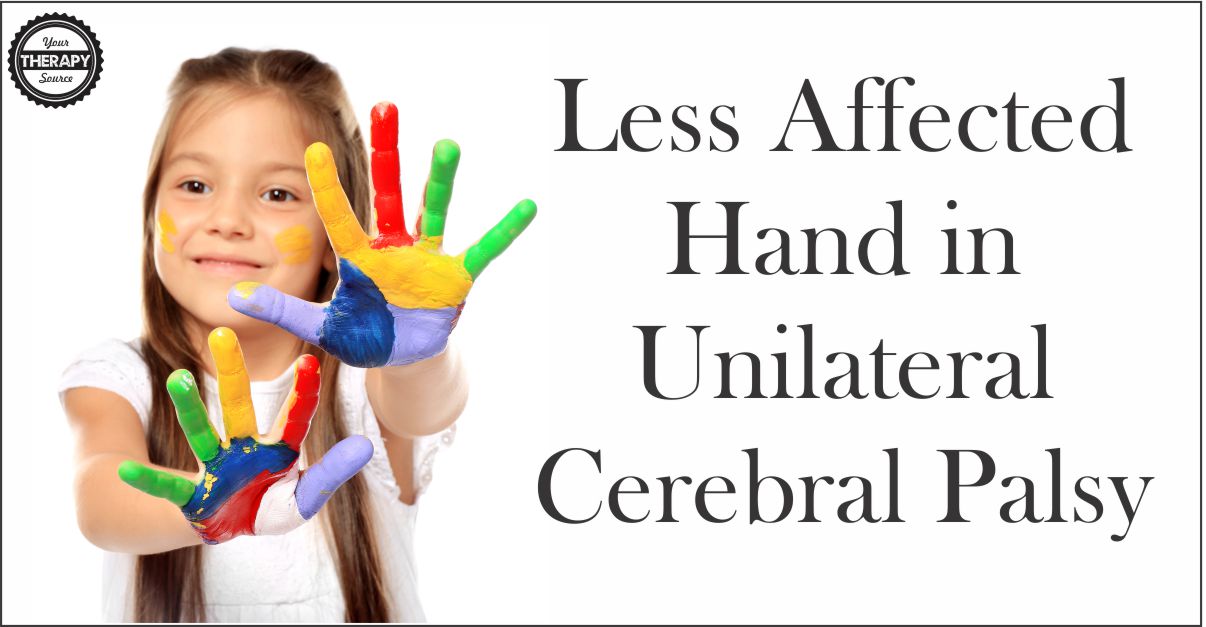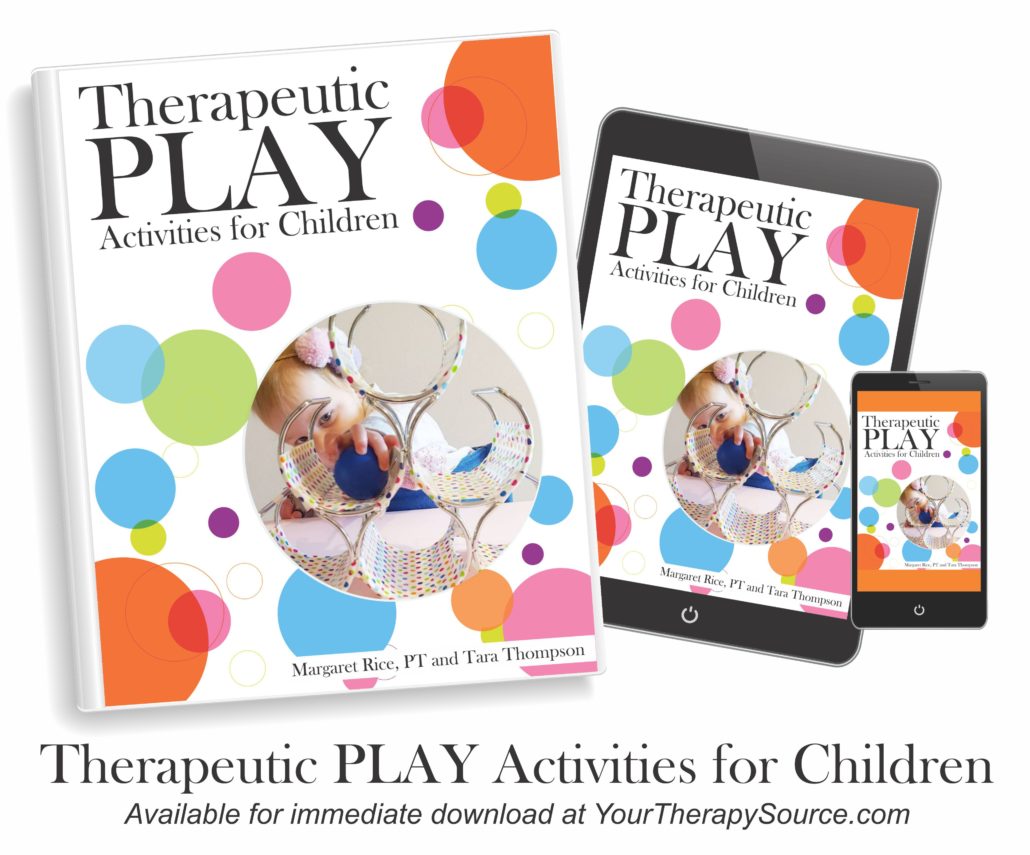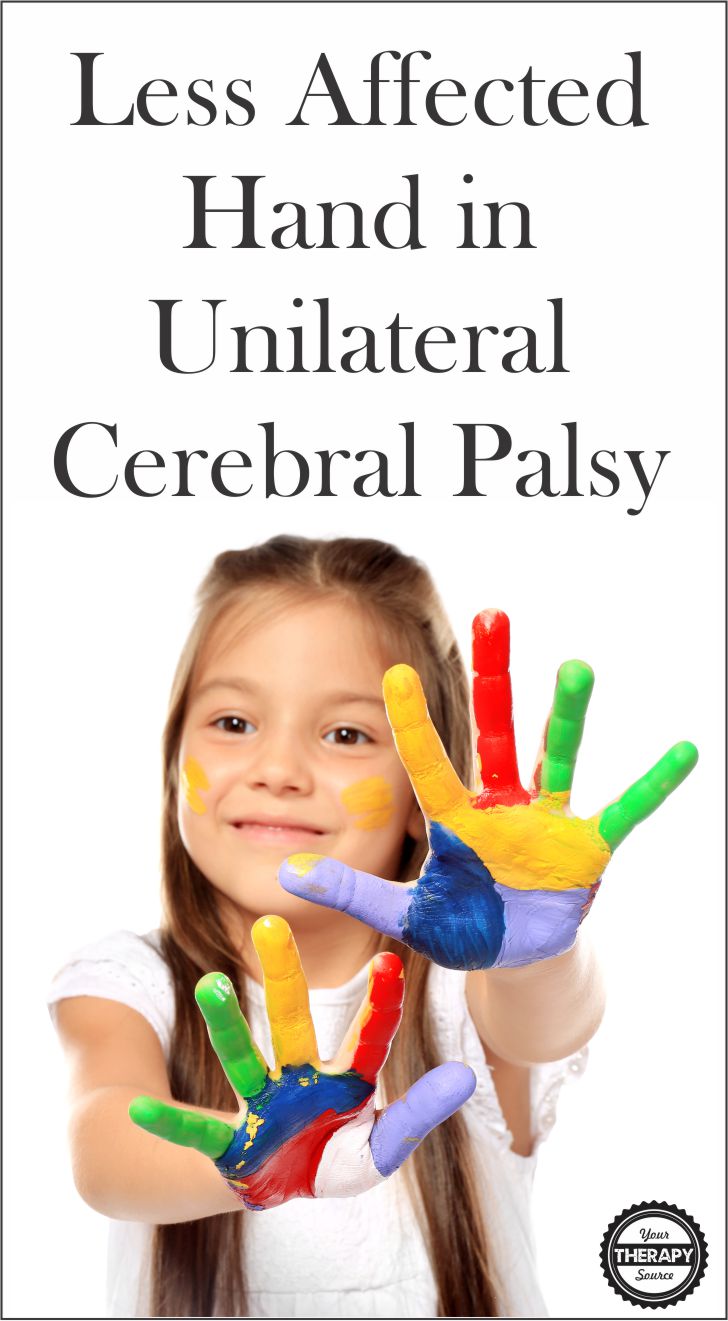Less Affected Hand in Unilateral Cerebral Palsy
 Less Affected Hand in Unilateral Cerebral Palsy
Less Affected Hand in Unilateral Cerebral Palsy
When working with children who have hemiplegia, do you address the less affected hand in unilateral cerebral palsy? Or do you assume that the less affected hand is within normal limits for typical child development? Sometimes, the difference between the hands, gives the impression that the less affected hand is functional and age appropriate but in reality, there may be decreased function in both hands.
Neurorehabilitation and Neural Repair published research to compare hand function in 47 children, by timed motor performance on the Jebsen-Taylor Test of Hand Function (JTTHF) and grip strength of children with unilateral cerebral palsy to children with typical development. Each participant was evaluated for baseline hand skills and single-pulse transcranial magnetic stimulation testing to assess corticospinal tract and motor threshold.
The results indicated the following:
- the mean difference of the less-affected hand of children with unilateral cerebral palsy to the dominant hand of children of typical development the JTTHF was 21.4 seconds.
- the mean difference in grip strength was −30.8 N
- resting motor thresholds between groups were not significant.
- age was significantly associated with resting motor threshold.
Regarding the single-pulse transcranial magnetic stimulation testing:
- children with unilateral cerebral palsy ipsilateral pattern of motor representation demonstrated greater mean differences between hands than children with contralateral pattern of motor representation.
The typical pattern is a contralateral motor pattern where the motor-evoked potential response is in the more-affected hand following stimulation of the contralateral, lesioned hemisphere. An ipsilateral motor pattern describes an absent motor evoked potential response in the more-affected hand following stimulation of the lesioned hemisphere and a present motor-evoked response in the more-affected hand following stimulation of the nonlesioned hemisphere.
Overall, deficits in speed and strength of the less-affected hand in children with unilateral cerebral palsy were observed when compared to the dominant hand of typically developing peers.
The researchers concluded that the less-affected hand in children with unilateral cerebral palsy underperformed the dominant hand of children with typical development. The less affected hand should be assessed and intervene if necessary during rehabilitation. Future research should focus on bilateral hand function.
Reference: Rich, T. L., Menk, J. S., Rudser, K. D., Feyma, T., & Gillick, B. T. (2017). Less-Affected Hand Function in Children With Hemiparetic Unilateral Cerebral Palsy: A Comparison Study With Typically Developing Peers. Neurorehabilitation and Neural Repair, 1545968317739997.
 Therapeutic Play Activities for Children– Do you work with young children with cerebral palsy, autism spectrum disorders, developmental disabilities or delays? Are you in search of new, creative ideas for your therapy sessions? Do you need home exercise program sheets to encourage carryover of therapeutic activities? Do you need simple ideas that use materials that you have around your house, therapy room or classroom already? Do you work with children who receive constraint or bimanual therapy? Therapeutic Play Activities for Children includes 100 play activity sheets with a photo of the activity, purpose of each activity and materials list. The 12 tip sheets include topics such as modifications, peer interaction, guided play, prompts and several specifically for children with cerebral palsy. FIND OUT MORE INFORMATION.
Therapeutic Play Activities for Children– Do you work with young children with cerebral palsy, autism spectrum disorders, developmental disabilities or delays? Are you in search of new, creative ideas for your therapy sessions? Do you need home exercise program sheets to encourage carryover of therapeutic activities? Do you need simple ideas that use materials that you have around your house, therapy room or classroom already? Do you work with children who receive constraint or bimanual therapy? Therapeutic Play Activities for Children includes 100 play activity sheets with a photo of the activity, purpose of each activity and materials list. The 12 tip sheets include topics such as modifications, peer interaction, guided play, prompts and several specifically for children with cerebral palsy. FIND OUT MORE INFORMATION.



